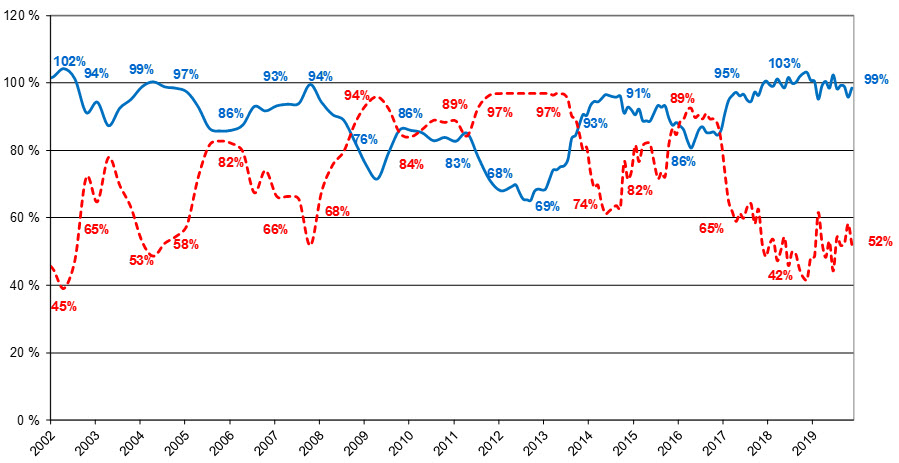Pension plans’ financial health slightly declines as falling bond yields and weak asset returns pinch median solvency
Aon survey: Median Solvency Ratio at end of Q3 2019 stood at 98.6%
Toronto(September 30, 2019) – As bond yields declined and asset returns stalled in response to global economic uncertainty, the solvency positions of Canadian defined benefit pension plans declined slightly in the third quarter, according to Aon’s latest Median Solvency Ratio survey. While overall solvency remains high, the decline in yields and murky economic picture should be seen as a “warning sign” for pension plan sponsors, according to Aon, a leading global professional services firm providing a broad range of risk, retirement and health solutions.
Quote:
“Bond yields continued to fall in the third quarter, and the risk that equity returns are going to follow them is become more and more clear,” said Erwan Pirou, Chief Investment Officer for Aon’s Delegated Investment Solutions in Canada. “Economic uncertainty seems to have set in to financial markets, which means we don’t foresee a sustainable rebound in yields anytime soon. That’s increasing plan liabilities at the same time that the return horizon for equities is looking murky. Aon’s research shows that plan sponsors are increasingly turning to alternative investments in search of yield and diversification, and that makes sense. But it might not go far enough. Plan sponsors need to consider every means to take risk off the table, including hedging strategies. Time might be running out.”
“The Median Solvency Ratio is potentially a warning sign for plan sponsors,” said William da Silva, Canadian Practice Director, Retirement Solutions, Aon. “While DB plans are still financially strong by historical standards, declining solvency positions suggest this may be as good as it gets in the short term. Aon’s recent Pension Risk Survey showed that plan sponsors might not be pursuing de-risking strategies aggressively enough; if they aren’t, now is the time for a rethink. Strong solvency over the past few years has given Canadian pension plans a huge window of opportunity to lock down an end-game strategy, but that window seems to be closing.”
Key Facts
- Aon’s Median Solvency Ratio declined by 0.7 percentage points in the third quarter of 2019, to 98.6% from 99.3% in Q2.
- More than half (52%) of plans were in solvency shortfall as of Sept. 30, 2019, up 0.2 percentage points since the end of the second quarter.
- As they did for the two previous quarters, Canadian bond yields fell in Q3, with Canada 10-year yields down eight basis points and Canada long bond yields down 11 bps. Lower yields increase pension plan liabilities, adversely impacting plan solvency.
- Pension assets returned 2.2% in the quarter, compared with a return of 2.7% in Q2.
- In Canadian dollar terms, most equity indices had positive but weak returns, led by the Canadian S&P/TSX composite (+3.1%), the U.S. S&P 500 (+3.6%), global MSCI World (+2.3%) and international MSCI EAFE (+0.3%) indices. The MSCI Emerging Markets index, meanwhile, declined by 2.3%.
- Real asset returns surged as investors sought diversification from equity exposures. Global real estate rose by 5.6% in CAD terms while global infrastructure rose by 4.4%.
- In fixed income, falling bond yields drove prices higher. The FTSE TMX Long Term Bond Index rose by 2.1%, while the FTSE TMX Universe index rose by 1.0%.

About Aon’s median solvency ratio survey
Aon’s median solvency ratio measures the financial health of a defined benefit plan by comparing total assets to total pension liabilities on a solvency basis according to the different legislations. It is the most accurate and timely representation of the financial condition of Canadian DB plans because it draws on a large database and reflects each plan’s specific features, investment policy, contributions and solvency relief steps taken by the plan sponsor. The analysis of the plans in the database takes into account the index performance of various asset classes, as well as the applicable interest rates to value liabilities on a solvency basis.